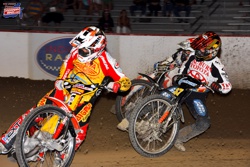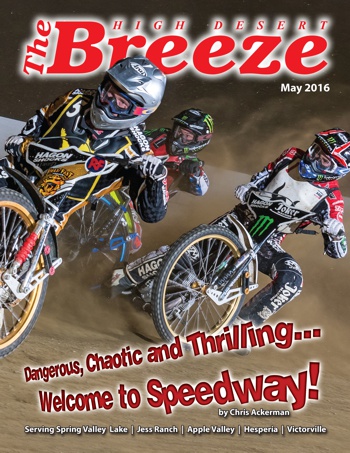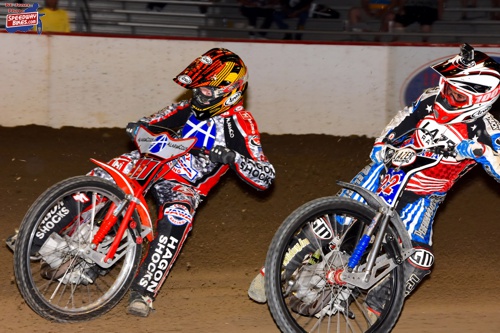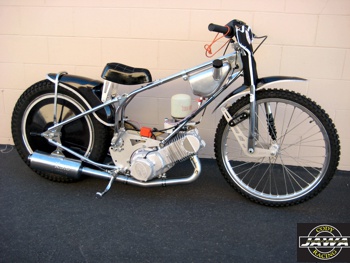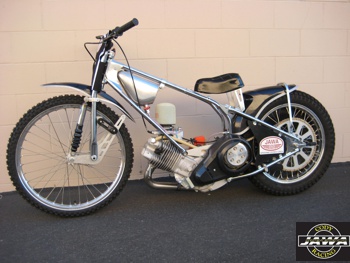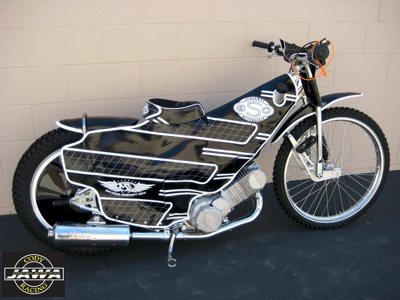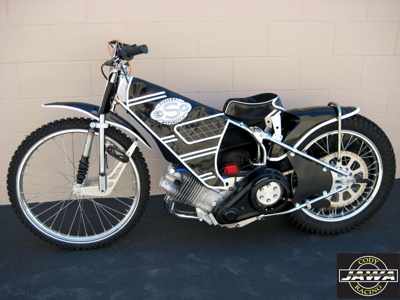 |
|---|
| American Speedway | |||||||||||||
|---|---|---|---|---|---|---|---|---|---|---|---|---|---|
|
Speedway -- What is it?
When they hear the term "Speedway," most North American motor-sport fans think of Stock Car and Indy car racing. The same fans might be surprised that the rest of the world knows Speedway motorcycle racing - on oval-shaped dirt tracks - has a huge following in Europe. Speedway racing was, at one time, THE most popular spectator sport in Great Britain. In Poland, a major race can draw over 30,000 spectators. Several American riders have moved lock, stock and barrel to Europe, once having been signed by a professional team. These stars include the 1996 World Speedway Champion, Billy "The Bullet" Hamill. Billy hails from Southern California (SoCal), the hottest place in North America for Speedway. Also from SoCal is the 1997, 2011, 2014, and 2016 World Speedway Champion, Greg "Grin" Hancock. Crowds of over 5,000 fans flock to one of several major tracks not far from the City of Los Angeles, California. See the Track Page to locate the track nearest you. For those somewhat unfamiliar with the average Speedway bike, we can tell you that they are built like drag bikes, stripped to the bare essentials. Start with a light, steel-alloy frame and cushion the ride with minimal front suspension and no rear-end suspension. The engine is a 14:1 methanol-burning 500cc four-valve fire-breathing dragon, driving a heavy duty racing clutch that turns a series of sprockets, but there no transmission. One speed is all you get. There is no starter. The bikes are push-started. You will notice we have not mentioned brakes in this narrative. This is not an oversight – these bikes do not have brakes! To slow the machine enough to get it to "turn" on the average 1/8th or ¼ mile track, Speedway riders chop the throttle for a split second, yank the handle bars briefly to the right, pitch the bike sideways and slide into the corner. As the bike begins going around the turn, the rider reapplies power, balancing ever so precariously as he or she slides along on the steel shoe of his or her left boot, standing straight-legged on a steel peg with his right foot, all the while leaning forward with his chin over the handle bars to prevent "looping" the powerful bike when it "hooks up." Go like hell down the back-straight-away for a short distance, then pitch it sideways again in preparation for the next left-hand turn. The average four-lap race is usually over in sixty seconds. There are no practice rounds before the race. It's full-out from start to finish, with speeds approaching 140 KPH. With up to six riders competing wheel-to-wheel in the same race, you can understand why Speedway can be spectacular. "It is actually harder than it looks," this reporter was told by a popular SoCal Sidecar driver. "Sidecars are a snap compared to handling a Speedway bike!" Unlike many race tracks, spectators have a full view of the Speedway track, and it's easy to determine who's leading and who is moving up. Please refer to Chris Ackerman's of Signify Designs article he wrote in 2016 for the High Desert Breeze below. For more information about the world of Speedway, check out the World Speedway link. There are some Frequently Asked Questions for your review, provided by Kevin Meynell.
| ||||||||||||
